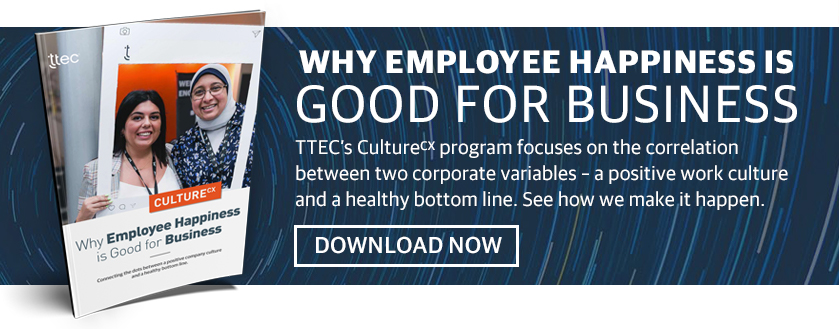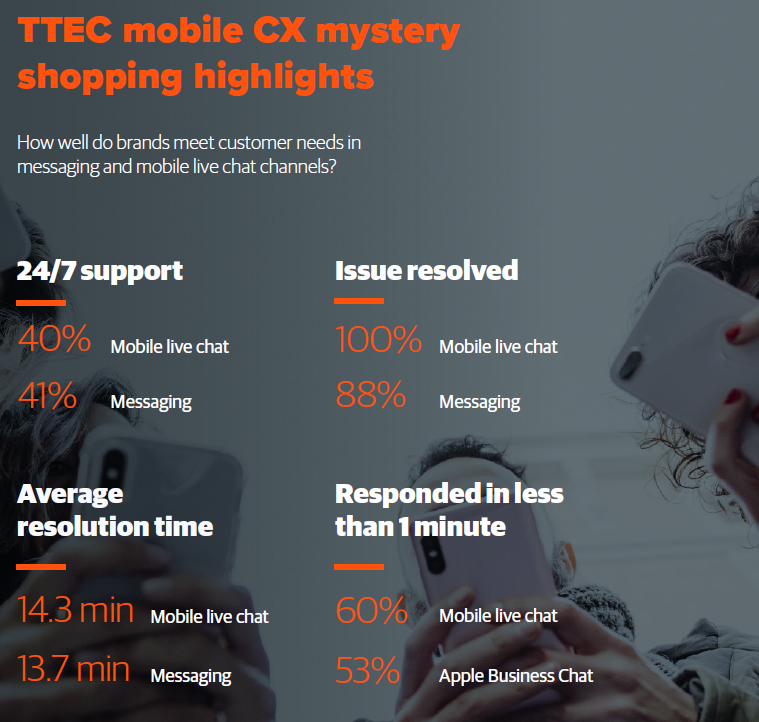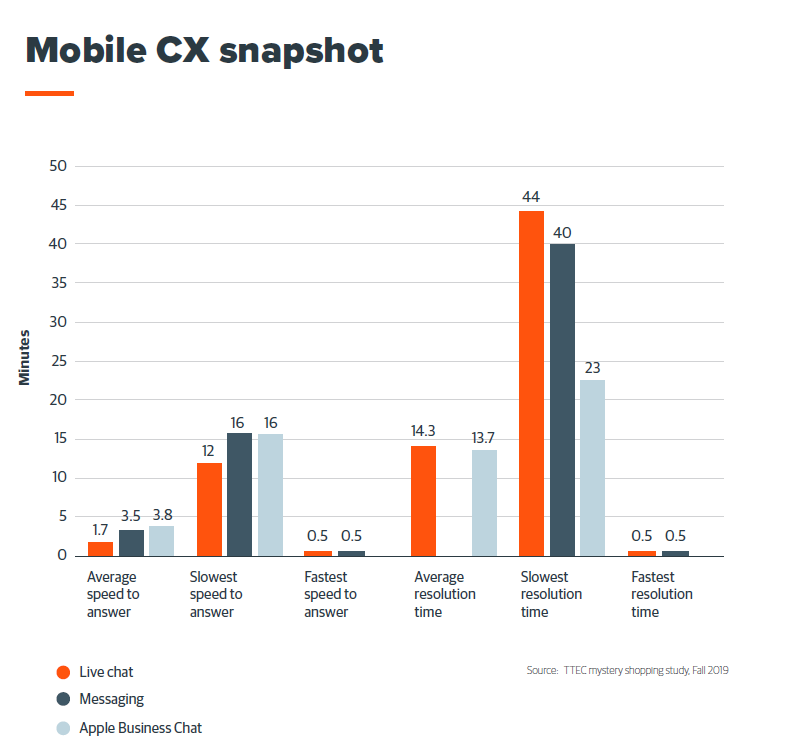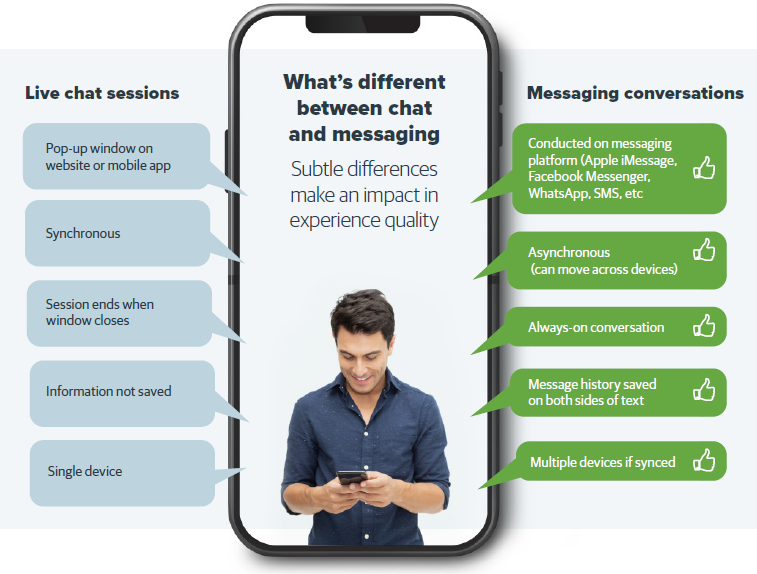The term “digital transformation” is meant to represent faster, more convenient, and more cost-effective ways that companies conduct end-to-end business through digital means. Yet prior to COVID-19, the concept mostly conjured up images of arduous and expensive IT projects that could take years to implement. Mention digital transformation to a CFO, and you would likely get push-back about big expenses and little ROI.
Then the pandemic happened. Digital became a lifeline for companies struggling to maintain their operations and customer experiences in a completely virtual marketplace. Traditional digital transformation projects were largely on hold as companies focused on business continuity and readjusting their business for creating “the new normal.”
For example, BCG reports that nearly 60% of enterprises have paused deployments of new technology not currently in their IT stack, 54% have delayed upgrading existing hardware, and 44% have delayed feature add-ons or upgrades to existing software. Focus has shifted to what will keep the business going without taking on too much risk.
Guess what’s mission critical for contact centers in the COVID-19 age? Cloud. Remote workforces. Intelligent automation. Messaging. Omnichannel. Asynchronous employee training. Customer initiatives based on speed, flexibility, and a better customer experience.
Why are they so important? Because they don’t break the bank. They can be deployed quickly, often without IT resources. And they show immediate outcomes, recouping costs and generating ROI, sometimes in a matter of days. What’s more, they serve a pressing need and customers and employees prefer them because they’re faster, more easily accessible, and make experiences more effortless.
These nimble, incremental investments represent the essence of true digital transformation. Business leaders aren’t trying to build a utopian version of their business led by a complete digital overhaul. They are trying to keep up with market, environmental, and consumer demands in a way that works. If they do it right – with a customer focus — they will one day step back to see that they have digitally transformed their business and created an entirely new and better way of doing business that’s led by digital.
This new definition of “digital transformation” to mean a digital-first way to do business is pervasive across industries as diverse as healthcare, education and the public sector. School systems have launched remote learning tools like Google Classroom that won’t disappear when the virus does. (Say goodbye to snow days). Telehealth has finally found its footing among doctors and patients who had been resistant to using it for simple appointments. And government agencies are turning to mobile messaging and other digital tools to streamline enormous, unforeseen unemployment claims volume.
In fact, over 80% of companies now indicate that accelerating their digital transformation is a strategic necessity, according to a July BCG report.
“We are simplifying and reinventing our products, enabling digital sales, and using automation to optimize our back-office processes. If COVID didn’t happen, we would have moved forward on all of this, but not as quickly,” Rich Gilbert, senior vice president and chief digital information officer at insurance firm Aflac, recently told CIO magazine.
Digital transformation isn’t a one-off big spend. Rather, it’s a state of mind that continually evolves as organizations adopt new digital solutions to solve business problems over time. There’s no “end” to digital transformation. Instead, always be asking questions like, “How can we help clients with quick wins that have low effort and high impact” or “What can we do to prepare for the future?” Make decisions that answer these questions through the lens of reducing the effort it takes for customers to do business, employees to do their job, and for the company to reach its goals. Then continue to roll out on a larger scale as you spread across the business.
Companies don’t have the luxury or appetite anymore to weigh down their business with large-scale digital transformation projects. The pandemic busted open the digital front door. It’s up to companies to walk through and settle in with an incremental and outcome-based digital business approach.
Goodbye Mammoth Digital Transformation Projects. Hello Digital Business
How to Create a TikTok Marketing Strategy that Cuts Through the Noise
In spite of recent political turmoil, the video app TikTok is experiencing a meteoric rise in the U.S. TikTok has about 100 million monthly active U.S. users, up 800% from January 2018 (it has 850 million monthly active users worldwide).
Marketers are eager to engage TikTok’s rapidly growing audience but like any platform, there’s an art and a science to creating content that will resonate on the video app. We spoke with Evan Horowitz, CEO of creative agency Movers + Shakers, which has created some of TikTok’s most viral campaigns, on how to win attention on the lightning-fast platform.
What makes TikTok such a compelling platform for consumers and marketers?
Compelling is a good word for it. We’ve just seen a meteoric rise and usage of the app. I mean, a couple of years ago, no one had ever heard of it. Pretty much all of Gen Z was on it and extremely active spending more time on there than any other social app. And this year it’s growing so fast that it makes the previous year’s growth look sleepy.
Quarantine has led a lot to that just with people being at home more, but we’ve seen TikTok age up faster than any platform in history. So now most millennials are quite engaged in the app. Even beyond that, I think it’s really driven by a unique environment that TikTok has created. It’s extremely entertaining.
And I think that’s what you’ll notice when you first download the app, the TikTok algorithm does a great job of really learning who you are and what your interests are, and starts very quickly show you things that you’ll enjoy. Similar to how the YouTube algorithm is recommending content for you, but TikTok I think just does an even better job than YouTube and within minutes to hours of spending time on TikTok, you’ll find yourself drawn in.
You’ve seen a lot of success on TikTok. The Eyes Lips Face (e.l.f) campaign garnered over 5 billion views and millions of user-generated videos.
As an agency, Movers + Shakers has had over 60 billion views now on our TikTok campaigns…still trying to get my head around that. I think that that speaks to our success, but also speaks to the power of TikTok to create engagement on a scale that we’ve never seen possible on any other platform.
We first heard the news that TikTok would be banned from app stores. And now we learn that the app will be spun off from its parent firm ByteDance, Oracle will become TikTok’s cloud provider while Walmart will harness its omnichannel retail capabilities. What does all of this mean for brands using the app?
I don’t think it really means that much for marketers. The new partners just ensure that stability that I think we’re all looking for from a political standpoint, so that we can continue to just do the great work we’re doing and from a marketing front and from a consumer perspective, it’s just business as usual.
What are your thoughts on TikTok as an AI-driven platform and what do you think its lasting impact would be on social networks and brand marketing?
TikTok has definitely changed the dynamic of social networks. Artificial intelligence is a huge part of that. You know, when we were talking earlier about the algorithm and how smart the algorithm is, it’s just better than any other social media platforms’ algorithm for learning about people and showing you things that you love. So one of the really interesting things about TikTok is if you take my phone and you open my TikTok app, and if you take your phone and you open your TikTok app, you wouldn’t even think you’re on the same app. It’s just going to feel so different. One person is going to see tons of puppies and baseball and cooking. Somebody else is going to see basketball and beauty and car repairs. All of these communities exist and TikTok quickly gets a sense of what you’re into and funnels you into these places and that’s all through their AI.
Unlock Relevant Sales Experiences with Speech Analytics
The at-home environment has put digital, convenience, and proactive service into hyper-drive. This applies to sales as well as customer service. Inside sales associates are turning to new ways to meet and beat sales targets.
One important digital sales tool is speech analytics. In the TTEC OnDemand Webinar, How the selling greats use speech analytics to score more deals, we teamed up with top players in the speech analytics game to explore how organizations can use speech analytics to gain efficiencies, lift conversion rates, and improve revenue. The panelists highlighted how speech analytics can empower inside sales associates. Here are just a few of the capabilities discussed:
The right tool for the job
Speech analytics is the analysis of transcribed voice and ingested text engagements along with metadata including CRM and notes to identify trends, voice-of-the-customer insights, performance drivers, and other insights to help sales conversations and decision making.
This is incredibly important for a sales process that could go sideways at a moment’s notice due to bad interfaces or poor communication. Speech analytics provides evidence and insight to help get sales over the finish line.
Identify top and bottom performers
Any top-performing team knows all its players’ strengths inside and out. This is traditionally built by consistent teamwork and mentoring, but many teams aren’t thousands strong or are separated by at-home work. Speech analytics can bridge this gap through analysis to identify top and bottom performers to help seize moments of praise and improvement to share with others.
Speech analytics allows brands to deep dive into past customer interactions and dialogue to identify patterns among top-performing associates that can be replicated by others. Lower performers can learn from the very best on specific topics like identifying customer pain points, uncovering intent, and other ways to successfully turn a conversation into a sale.
Once operations leaders better understand what behavior and phrases are driving sales, they are better positioned to build positive insight for agents.
Keep your head in the (word) cloud
People are creatures of habit. Without proper guidance your agents’ day-to-day behavior becomes inflexible and is prone to mistakes. Speech analytics can foster self-coaching opportunities by simplifying data with visual word clouds to provide insights.
Word clouding aggregates and visualizes frequently used keywords and phrases during conversations to provide a tangible and interactive learning opportunity for new-hire classes and existing agents. Replies and reactions from a conversation create coachable insights that show inside sales associates which aspects of their daily activities are successful or need improvement.
The inclusion of word clouds to share insights and training performance shortens ramp time for new hires and fosters peer-to-peer coaching opportunities for remote and physical locations. It can be an essential tool for brick-and-mortar/digital hybrid offices to disseminate complex information quickly and easily.
Word clouds also allow agents to share successful phrasing with their team. This back and forth conversation, internally and externally, allows only the best behaviors to be passed down to the next agent.
Discover the voice of the customer
Speech analytics draws from thousands of interactions at once. Sitting on this mountain of data makes it easier to understand the impact of sentiment, emerging topics, and perspectives with voice of the customer.
Grasping how a customer interacts with your product and channels helps agents understand the cadences in a conversation and set a tone that naturally fits the interaction at any point of the sales journey.
Customers who sense that you don’t really know them will go elsewhere. Rather than wait on CSAT results, speech analytics provide you with real-time information that gives you a look into the customers’ life. Tailor fitting each customer interaction can help agents drive revenue, boost personalization, and brand loyalty.
Make your sales voice heard
Speech analytics isn’t a one-and-done deal. It takes take time to develop insights. But once the ball gets rolling, inside sales agents can unlock a new perspective on their work and how to interact with sales prospects that was not possible before.
Interested in learning more? Watch the complete on-demand webinar, How the selling greats use speech analytics to score more deals.
Can You Spot a Toxic Company Culture?
Where is the line between performance feedback and bullying? When does hustle culture become abusive and dangerous? Toxic company cultures are all too common in modern businesses. One in five Americans have left a job in the past five years due to bad company culture, according to a recent SHRM report on workplace culture. The cost of that turnover is an estimated $223 billion.
Addressing toxic company cultures—typically defined as a culture where employee trust, morale, and psychological safety have plummeted— is especially important in today’s rapidly changing workforce and workplace. Employee demands for organizations to be more inclusive and diverse are growing and technological advances are changing the ways people work and collaborate with each other.
Steve Koepp, cofounder of From Day One, a conference series and media outlet that’s focused on corporate values, and a former executive editor for Time and Fortune magazine, has spent a lot of time studying the relationships between employers and their employees as an entrepreneur and journalist. Koepp shared insights on how to avoid a toxic company culture and still be customer obsessed.
What lessons have you learned about balancing business growth and positive company culture?
Steve Koepp: I have learned valuable lessons in the damage of both growing too slow and too fast. At the early stages, growth was frightening, and as I developed our teams, the leaders started to lose vision without expansion. They stopped seeing the potential for growth within my company. This either caused an A-player to reduce to a B-level or to leave my company for another opportunity.
The contradiction of slow growth was expanding opportunity before my table was set. In 2015 my ego and ability to expand outgrew the size and capability of my team. This forced us to hire and perform different than the module that we built and were successful with up to this point. Hiring outside our normal parameters forced us to settle with B-players in a management position that demanded an A-player.
These B-players were often from another company that did not have the culture that we did, and we did not have enough time with them inside our culture to conform. This became even more dangerous because their management position included training of new hires. This instantly affected our customer satisfaction in a negative way, and we stopped getting the retention that our model demanded. This required us to advertise more to compensate for the lack of retention. I saw our company culture shifting in a way that hurt my soul.
At what point does adhering to a company’s mission become obsessive and toxic?
SK: A lot of companies have mission statements. Not a single company of mine does. Is that against the norm? Yes. Is a mission statement necessary to run a business? No. What’s even worse that I’ve seen, though, is companies that have a mission statement but it’s the farthest thought process from their actual culture and how they operate. You and your choices of who you hire keep your company from becoming toxic. Obsessive isn’t a bad thing, but being stubborn with a statement on a wall is toxic. I preach that your head has to be on a swivel and be light on your feet. Meaning, be open to new ideas and the ability to see things through others’ eyes.
Given customers’ high expectations for 24/7 support and fast service, is it harder than ever to deliver great service?
SK: Customers’ expectations have always been high and they should be. All of the technology advances with smartphones has just given everyone everything they have always wanted right there in their hands, but that does not change good old-fashioned customer service. Customers’ biggest complaints are that we waste their valuable time, but this does not mean we have to be faster, it just means, DO NOT WASTE THEIR VALUABLE TIME.
What’s your advice for small companies on meeting customer and shareholder expectations without losing their employees?
So, my advice is:
Be prepared
- When you have an appointment [virtual or in-person] with customers or clients, be early and have all the information they have requested and might request ready when they get there.
- Send them appointment reminders so that they know you are a professional.
- When they are there, HUSTLE, so that they eventually give you permission to slow down. They will appreciate the fact that you value their time, and the opportunity to earn their business.
Be available
- Give customers your cell phone number.
- Ask them their preferred form of communication, then honor their request there.
- Being available 24/7 is not literally 24/7, but answering a text while eating dinner is acceptable as long as you explain that you will get right back to them after dinner.
Don’t focus your energy on not losing an employee otherwise you will be walking around on eggshells all the time
- Instead, give your employees (team members (I hate the word employee)) all the resources they need to be successful.
- Servant leadership—this is why I hate the word employee—your team needs to feel like you work for them.

3 Ways to Drive Effortless Customer Experiences
Understanding where your customers are and how to reach them in a seamless fashion is the cornerstone of any modern customer experience. Unfortunately, by the time a customer typically reaches your contact center it means you have failed to deliver an effortless experience.
So, imagine if you could get a clear view of your current customer experience across all channels and touchpoints for each customer journey, and a digital strategy that differentiates your CX from competitors through its effortless and proactive design.
In today’s world, it’s crucial that your end-to-end customer journey is seamless and can be orchestrated, automated, and proactive across all communications channels. Here are three elements that can drive personalized effortless experience and pre-emptively meet customer needs:
1. Rethink contact centers as ‘customer’ centers
Traditionally, contact centers have focused on how to optimize customer interactions only once a person has contacted an agent. However, innovative CX companies have begun to reap the benefits of orchestrating the entire CX journey to better understand their customers.
Again, contact center agents are oftentimes on the receiving end of a customer experience that’s gone awry, as they encounter someone in a customer journey who has reached a point where they can’t solve it on their own.
That’s why we need to think in broader terms of how to manage that end-to-end customer journey and what impacts it can have on the customer. Contact centers should focus on the following in their evolved role as customer centers:
- Monitor all customer interactions
- Ingest & integrate CX data
- Transform operations into a real-time command center
- Orchestrate & deliver customer journeys preemptively and proactively (vs responsively)
- Tune & improve interactions over time through analytics and proactive orchestration algorithms
And just as customers can come into your business from multiple channels— digital to voice, voice to chat, brick and mortar to mobile—remember that these steps too can cross over each other at different moments in time. This exacerbates all the outcomes that could potentially occur. By understanding the flexible nature of today’s customer, you can start to influence and drive better experiences.
It’s from here that you can gain the ability to preemptively predict customer needs and proactively deliver the right information over the right channel quickly.
This presents a huge opportunity to reduce contact center volume while also reducing the customer’s effort that’s required to solve their issue.
2. Make CX effortless through digital messaging
Digital channels have evolved to become a myriad of communications such as text, messaging, video, and apps blended today in a digital ecosystem.
It’s all asynchronous, all in one place. Customers now expect you to meet them on their terms, on their own time. That’s why enabling customers to communicate with agents this way has made the digital messaging channel a much richer and candidly more convenient channel than traditional voice or webchat.
With digital messaging organizations can handle hundreds of thousands to millions of contacts in a day. It’s quick to turn on and quick to scale (typically weeks for an initial deployment, not months).
We’re finding that this evolution of digital messaging has made it much more feasible to meet the customer where they are in 2020 and the new-normal and assist them within that native channel, as opposed to forcing them out of a channel and into IVR.
The cloud space is really driving this agility. As the quarantine began, we found that many companies were plagued by long hold times, customers were frustrated and centers needed to offload volume.
What we found is with digital messaging in the cloud, centers can handle an incredibly larger volume of contacts per day. It’s quick to turn on, quick to scale.
And this isn’t just valuable for customers, it’s incredibly valuable for employees, as well. A majority of contact center agents are still working from home and these channels are more conducive to a work from home environment for employees who may not, always have a perfectly quiet environment, especially with homeschooling. For many, digital messaging is a way to keep a conversation going alongside the challenges of today.
The comfort level of this channel for agents and customers makes it the perfect avenue to create effortless, meaningful relationships.
3. AI is a CX game-changer
Now you are orchestrating the customer journey and connecting customers to relevant digital channels, but oftentimes customers have questions that do not demand an agent, or they want immediate response. The best way to leverage this need for self-service and effortless experiences is to let AI come into play.
AI leverages both strategies we discussed above. It enables you to not only meet the customer in digital channels, but immediately deliver assistance instead of asking the customer to wait in time consuming queues. Intelligent automation can help identify customers at the moment of need and serve them directly on time by leveraging analytics and knowledge management.
It’s also important to note that AI isn’t just chatbots. When an agent does need to jump on call, AI can act as an intelligent virtual assistant to employees that enables them to provide relevant and insightful information. The real power of intelligent automation is its ability to guide customers and agents across their entire journey to enable effortless experience.
AI needs to be embedded across the entire customer experience—it’s part of the journey orchestration, it’s part of omnichannel, and it empowers all these factors to deliver immediate and effective results.
Make effortless experiences the new normal
Your customers want to be on the receiving end of effortless experiences and the technology to deliver it is there for the taking. But with a fragmented strategy, creating effortless experiences will be nearly impossible.
The winners of 2020 understand that personalized, powerful, customer experiences are driven by understanding the entire journey, utilizing the right channels, and deploying the automation intelligently.
3 Ways Companies can Reset—and Win—at Customer Loyalty
The importance of customer loyalty and retention can’t be overstated. Loyal customers are less price sensitive and more likely to make frequent purchases—in addition to being brand advocates. Research also shows that just increasing customer retention rates by 5 percent increases profits by 25 percent to 95 percent. Plus, retaining customers costs less than continually acquiring new ones.
But what does it mean when the usual factors that drive customer loyalty—product, price, place, and promotion—have been stripped away or nullified? Brands are finding out for themselves as they look to adapt to markets and customer behaviors that have been upended by the coronavirus pandemic. As companies reshape their business strategies, here are 3 predictions for the evolution of customer loyalty.
1. Relevance will be redefined
To keep customers loyal, brands need to be relevant. They must be able to track changes in consumer behavior and quickly act on those fluctuations. However, brands walk a fine line between coming across as superficial (see: the deluge of generic emails from brands assuring customers that ‘we’re here for you.’) versus authentic.
More and more consumers expect companies to take stances that reflect their values. According to a recent report from communications firm Edelman, which surveyed 12,000 people in several countries, 71 percent of respondents said that if a brand is perceived as “putting profit over people, they will lose trust in that brand forever” and 77 percent said “they want brands only to speak about products in ways that show they are aware of the crisis and the impact on people’s lives.”
Some brands, such as the British retailer Boden, took a frank approach in acknowledging the pandemic while explaining why they’re continuing to sell merchandise. “It might seem highly inappropriate to show you clothes for which you currently have no need,” the retailer wrote in an email to customers. “But we’ve already made the clothes. We’ve already taken the photographs, we’ve already printed the catalogues. It was too late to stop. We hope you don’t find it horribly insensitive.”
Other brands highlighted the ways that they’re supporting people who have been impacted by the pandemic, such as continuing to pay hourly workers such as office cleaners for reduced-service needs, or converting factories to produce hand sanitizer and masks.
Prediction: Looking ahead, relevance will be defined less by the products and prices themselves and more by a “what have you done for me lately” mindset where brands must demonstrate how their values are aligned with their customers’ values.
2. Contact center associates will play a more active role in driving customer loyalty
Contact center associates are at the front line of customer issues but most are limited to resolving problems after they occur. What if contact center associates were instead proactively identifying solutions in a methodical, strategic approach that improves efficiencies, increases cost savings, and increases customer satisfaction?
At TTEC, we’ve been helping clients empower their front-line staff to make recommendations on how to solve customer pain points and improve the customer experience using their deep domain expertise and insights. For example, by equipping agents for an airline company with a speech analytics tool and Proactive Solutions training, they were able to uncover the fact that more than 57K inbound calls and chats were from members seeking assistance in retrieving their frequent flyer number (FFN).
Based on that insight, associates made it a point to inform members that they can retrieve their FFN, reset their PIN, and get access to other profile information through the airline’s online portal or its app by using their registered email address or mobile number. This insight ultimately led to an 87% reduction in call volume and $128K in annual cost savings. In another case, associates shared customer feedback about a new campaign that helped increase the brand’s Net Promoter Score by 2.3 points.
Prediction: At a time when many companies are working with tight profit margins, more will be looking to maximize employee resources. Empowering agents to proactively recommend solutions that improve the customer experience and increase loyalty is just one example of how companies will be making incremental improvements that drive fast outcomes.
3. Convenience becomes hyper-personalized
Even before the coronavirus struck, customers valued convenience. In January, the National Retail Federation released a report that showed 97 percent of consumers have backed out of a purchase because it was inconvenient for them. Fast forward a few months where conveniences such as contactless payments, curbside pickup, and grocery delivery have become a necessity.
It’s not a secret that customers value their time and appreciate brands that recognize this. They loathe being forced to take extra steps such as having to re-identify themselves to a customer care associate or repeat a question in order to complete a request.
Prediction: The companies that win at convenience and customer loyalty won’t necessarily be the ones with the shortest delivery times or most sophisticated contactless options. Rather, it will be the companies that understand as an individual’s situation changes, his or her perception of what is convenient also changes. Brands that have a robust system for identifying a customer’s digital behaviors coupled with the customer’s historical transactions, demographic, and psychographic data, will be better positioned to anticipate and act on a customer’s needs.
A new era
Even after the pandemic subsides, customers won’t return to pre-COVID expectations of service and support. To succeed in this new era of customer loyalty, companies must be willing to abandon old approaches and engage with customers in newly relevant ways. The good news is that companies already have most of the data needed to deliver more value to the customer—they just need the right strategies and tools to unlock those opportunities.
Survey: 67% of CEOs Expect to Hit Original 2020 Growth Targets
At the start of 2020, many CEOs had modest to high growth goals for their organizations. And then the COVID-19 pandemic struck. How have CEOs’ goals and priorities shifted in today’s new reality? And what lessons have they learned as they move forward?
Pete Hayes, CMO and principal at the consulting firm Chief Outsiders, shared insights from a recent survey his company conducted with more than 170 chief executives from mid-market companies across retail, technology, construction, healthcare and others on where they expect their businesses to be 6 months from now. This interview has been lightly edited and condensed for clarity.
Judith Aquino: According to the survey, most of the CEOs saw economic conditions improving in December 2020 or later. What factors do you think influenced that prediction and will you be conducting follow up surveys to see if that estimate changes?
Pete Hayes: That data point shows that most did think different things would be happening by six months out, so it’s kind of the end of the year timeframe, but almost the same amount of folks thought things would be improving sooner so it was a little bit of a split, but we do plan to come back to market after the third quarter to get a checkpoint.
But the things that we asked later on in the survey itself, it looked as though that was their expectation related to several, you know understandable, factors that you know what’s going on with the COVID trends themselves in terms of infection rates and so forth.
They came into this year, very optimistic about their own growth plans. In fact, they’re very optimistic about having a pretty strong year even though you know economic forecasts, you know, were suggesting slower growth. So it looks as though you know companies are kind of split there, but those factors are the things that they’re watching, not surprisingly.
What other results did you find particularly interesting or surprising?
PH: There’s a couple of areas of data points that are interesting and it has to do with the data sets that we collected…in general, you know, digital readiness and digital marketing capabilities, not surprisingly, are very, very high on the list of things to attend to. CEOs get it that customers are going to have to buy differently. So they have to provide more support through their digital channels.
And companies are having to accelerate even areas of e-commerce that weren’t on their priority list for right away. Even in the B2B space, what we’re seeing is that companies are having to find ways of getting sales without a salesperson visiting the factory. So they’re having to amp up their capabilities digitally.
CEOs are usually the visionaries, the ones with the big ideas, but it seems now they’re really buckling down and as you said, getting things done.
PH: Yeah, it’s a little bit of a surprise. The way we were looking at the past couple of months, or the past six weeks, you know, our advice to CEOs is just recognize you’re having to do five years of strategic planning in the next six weeks. And what seemed to resonate is there’s a few things that we [CEOs] might want to check on and shift and, you know, the data also showed that they were largely looking at new markets, new offerings, making pricing changes and doing those things you can expect you would tweak and finesse.
But overall, they believe that their core strategies—most businesses, their core strategies for growth—are solid and they just have to get things done.
Listen to the full interview podcast and read the transcript at the CXPod.
Forrester’s 2020 CX Index Report: CX Scores Rise Even During COVID
Businesses in every industry are continuing to deal with the effects of COVID-19. With many previous predictions on the US economy now registered moot, experts are now weighing on what it means to deliver relevant customer experiences.
Forrester’s 2020 US Customer Experience Index Report captured the early effects of the pandemic. This glimpse at the early days of COVID-19’s reach helps paint a vital picture on how uncertainty can affect customer experience.
Here are some of the biggest takeaways highlighted from the report, which surveyed more than 97,000 U.S. customers across 250 brands and 14 industries from January through March.
Brands that invest in CX are winning
Leading this year’s list are USAA and Navy Federal Credit Union, which scored 83.9 and 82.4 respectively, ranking them at the top of credit card issuers and banks (multichannel) for a second year. The report said they were exceptionally suited to the ‘new normal’ brought on by the pandemic because of their ability to:
- Consistently meet customer’s needs. They are insightful enough to understand what people want from their brand.
- Understand and react to emotions. These brands know how to delight their customers and foster these moments into great experiences.
- Rebound from mistakes. A key factor in the ‘new normal,’ these brands are have performed enough good acts to their customers that there is room for error as they reshape themselves post-COVID-19.
Organizations that led their industry in 2020 were:
- Airlines: Southwest Airlines (73.5)
- Auto manufacturers (luxury): Lexus (78.6)
- Auto manufacturers (mass market): Subaru (76.6)
- Banks (direct): USAA (78.6)
- Banks (multichannel): Navy Federal Credit Union (82.4)
- Credit card issuers: USAA (83.9)
- Federal government: National Park Service (77.2)
- Health Insurers: Florida Blue (72.1)
- Hotels: Hampton by Hilton (77.5)
- Investment firms: Edward Jones (77.6)
- Retailers (digital): Zappos.com (79.3)
- Retailers (multichannel): Trader Joe’s (80.7)
- Utilities: SRP (70.6)
Brands also saw a slight increase in CX satisfaction this year. The number of brands that scored “Good” (score of 75 to 84) jumped from 17% in 2019 to 20% in 2020, the highest in the last five years. Meanwhile brands who ranked “Poor” (score 55 to 64) dropped from 16% to 13% since last year.
Several brands that made the leap from “OK,” (score of 65-74) to “Good” included GEICO, Nationwide Mutual Insurance, and Lincoln.
Overall, multichannel retailers saw the biggest jump from ‘OK’ to ‘Good’ as seven brands: Kroger, Kohl’s, Petco, Ulta Beauty, Sephora, ALDI, and Costco Wholesale improved their scores.
Hotels and multichannel banks also had several brands move into the ‘Good’ category some of which were: Courtyard by Marriott, Holiday Inn Express, Chase, and U.S. Bank.
For a third year in a row, however, no brands where ranked “Excellent” (score 85 to 100).
Emotional connections remain essential
When we previously reported on Forrester’s annual US Customer Experience Index Report, we wrote that ‘customer experience is a never ending-journey.’ Customer expectations evolve, technology changes, and new ways to communicate emerge, but the need for human connection stays the same.
This year, it’s especially important due to how much has changed since the pandemic began. Feelings of happiness and value connect customers to a brand. A majority 76% of this year’s respondents who feel appreciated by brands will continue their relationship with the business, while 80% say they will spend more.
Likewise, as customers demand more empathy, they will continue to have a lower tolerance for negative interactions. Only 18% of customers who said they were disappointed by a brand will keep continuing business with them.
“To emerge successfully from this global crisis, brands must build experiences that help them engage with their customers at an emotional level,” said Sharyn Leaver, SVP of Research at Forrester in a statement about the 2020 report. “Brands can build a well of CX equity if they embrace a disciplined approach to envisioning, designing, and delivering a consistently high-quality experience. When consumer spending resumes, brands with experiences that engender customer loyalty will benefit the most.”
How to Move your Digital Transformation Strategy Forward (Hint: It’s not a Crisis Response)
Without question, the COVID-19 pandemic has laid bare consumers’ dependence on real-time digital services and experiences. When customers order groceries online, use telemedicine, stream movies, or message a customer support specialist, they’re confirming their demand for digital channels.
But meeting customer demands in crisis mode is one thing and delivering an exceptional CX in a world transformed by the pandemic is another. Ian Jacobs, principal analyst at Forrester, and Darryl Kelly, VP of marketing at TTEC Digital, discussed what customers want now in a customer experience and digital transformation trends on a recent webinar, “How AI delivers touchless and personalized experiences to the digital customer post COVID-19.” Here’s a summary of their discussion.
The state of digital CX
Two trends that emerged from the outbreak, Jacobs noted, were that many brands—especially those that were scrambling for ways to deal with a surge in call volume—were looking for “quick wins in building a digital front door” and that more attention was being paid to the employee experience aspect of digital transformation. “The second area that’s been really big is around employee experience—as in how do we actually enable these people to succeed at jobs…that are radically different from the ones that we designed and had processes to support those jobs?” asked Jacobs.
Those trends were in line with what TTEC was hearing from clients, Kelly said. In a recent TTEC poll, 45% of respondents indicated that they had accelerated their digital transformation strategy; 31% said their transformation was stuck, and 24% were planning to accelerate.
Underscoring both of these trends, Jacobs noted, was a shift in how companies think about customer service strategies and the overall CX. “One of the things that’s come up over and over again at the CEO level or C-suite…is during challenging times, we need to actually rethink what our contact center and customer service strategy is at its core,” Jacobs said.
Reimagining the employee experience
It’s not a secret that happy employees equal happy customers, however, historically the employee experience was often neglected, especially in the customer service sector. Contact center agents have long had to wrestle with disjointed workflows that lead to delays and outdated systems and processes that make it difficult to work efficiently and effectively.
Reimagining the contact center and customer service strategy means reimagining the employee experience. That includes applying customer experience improvements, such as reducing customer effort, to the employee, Jacobs said. “We’ve gotten a lot of mileage out of thinking about how can we make things easier for the customer. There are parallels to that for employees,” he said. “How can we help them [employees] get things done?”
Removing friction from the employee experience is critical, agreed Kelly, who noted that this is where advanced AI solutions, such as conversational AI can help employees by quickly serving up information, providing recommendations, identifying patterns, and more. Indeed, every part of an organization could become “AI-infused over the next year” in order to “have the kind of agility that’s required to succeed,” Jacobs said.
Getting the employee experience right from a productivity and engagement perspective is also critically important as many employees adjust to working remotely as it ultimately affects the customer experience, he added.
Don’t call it a crisis response
Creating an optimal channel strategy that puts employee and CX design before technology is also an important part of improving CX over the long term. “What we’ve been hearing from clients that engaged with us over the last few months is this need to ‘get the channels right, get the channels right,’” Kelly said. “But channels alone without the right strategy, without the right journey orchestration, has actually increased effort and costs.”
Companies are now reassessing their strategies to get the most out of what they have, Kelly said. In fact, 55% of CIOs said investments in digital customer experience requirements was a top priority for 2021, according to a recent PwC survey.
And whether it’s optimizing channels or transforming another part of the customer experience, it’s important not to think of it as a crisis response but rather “your first step towards a long-term plan for agility,” Jacobs added. This includes rethinking labor and how employees work. The days of filling traditional brick-and-mortar contact centers with agents are not coming back anytime soon. Companies, Jacobs said, may need to “explore a gig economy model or think about digital native users and who succeeds in a remote environment.”
The key takeaways are that customer expectations for convenient, on-demand digital services and experiences are only going to accelerate further and companies need a long-term digital transformation strategy to evolve to meet those needs. An effective strategy starts with getting the basics right, which includes a cloud-based infrastructure to enable employees to work remotely as well as providing employees with the tools and support they need to work efficiently and effectively, today and in the future.
To learn more, watch the on-demand webinar, “How AI delivers touchless and personalized experiences to the digital customer post COVID-19.”
How Well Do Brands Use Mobile Messaging and Live Chat?
When customers reach out to a brand with sales or customer service questions, they increasingly do it from their mobile devices. Whether it be voice, chat or SMS messaging, digital-first mobile customer interactions are growing fast.
Insights from FacebookIQ found that 65 percent of millennials and GenXers prefer to message rather than call or email, followed closely by 63 percent of Baby Boomers. And that behavior is naturally shifting to business communications. But are companies ready to manage the shift to mobile? The short answer is no.
Research from Lawless Research and Twilio found that seven in 10 businesses surveyed think they are communicating effectively with customers, but only two in 10 consumers surveyed agree. The biggest roadblocks for customers are immediate help and swift resolution of their issues.
We decided to examine for ourselves what a typical mobile customer interaction looks like for consumers today, particularly when it comes to messaging and live chat via mobile phone. TTEC’s research team mystery shopped 27 companies from five different industries over a four-month period:
- E-commerce/retail
- Financial services
- Telecom
- Travel
- Utilities
The researchers asked simple questions like “can I buy an iPhone 11” for telecom companies to “can I book my trip through the app” for travel companies. Of those we researched, 81% offered a live chat option via mobile device, 63% offered some sort of mobile messaging option (SMS, Facebook, or Apple Business Chat), and 56% explicitly offered Apple Business Chat, which allows direct texts with a brand from Apple’s iMessage.
The findings shed light on what a consumer typically experiences today when interacting with a brand via live chat and text messaging on mobile devices*. We found some common practices across industries, as well as some areas that could be improved.


Mobile CX trends: What we observed
1. Human interactions remain essential.
Even in a digital environment, all 27 firms connected us to human associates to assist with our questions in both the live chat and messaging platforms. Prior to connecting to a person, however, two companies required at least five specific form fields for us to answer, which slowed down the process of reaching an associate and getting a response.
2. Be available when customers need you.
Less than half of the companies investigated (40% of mobile live chat and 41% of messaging platforms) offered 24/7 support. This could be especially frustrating in the mobile environment, where people are on the go and looking for an immediate resolution in the moment they reach out.
3. Resolution times vary.
We asked simple questions like “can I open a savings account” for banks and “do you offer express delivery” for retailers. Four companies (15%) answered our questions in under one minute. But another 15% of companies each took 23 minutes to resolve our questions in Apple Business Chat.
And in one extreme case, a financial services company took 42 minutes to resolve an issue via Apple Business Chat. It took 16 minutes to engage the customer’s initial request about opening a savings account, followed by a 7-minute response time to each follow-up question. The conversation ended with a generic link to open a savings account, even though in the conversation the associate said we did not qualify to open one. It was a poor experience that left us dissatisfied.
4. Live chat dominates.
More companies offered mobile live chat options than they did messaging. What’s more, 100% of live chat interactions were resolved, compared to 88% for messaging platform conversations. This likely means that the processes, associate training, and knowledgebases may be more mature in the live chat setting than nascent messaging.
5. Make it easy to find.
Most mobile CX options were easy to find. It took an average of 3 clicks from the homepage to access live chat, and 2 clicks to find messaging options for those who offered it. On the plus side, some sites had links on every page to encourage live chat or messaging. However, a few brands buried their digital options deep into their sites, with more than 5 clicks to reach them. And in one case we could only reach the mobile live chat option through a Google search that routed us directly to the chat function.

Mobile CX’s future lies in messaging
When it comes to the mobile customer experience, messaging will continue to grow as a preferred channel, as tools like Apple Business Chat are embedded seamlessly into everyday mobile activities like web searches and texting.
Why? Because messaging provides many benefits for both companies and customers. Simply put, customers like it better than more traditional live chat on mobile. It’s more intuitive, personal and emoji-friendly. In fact, more than 50% of customers prefer contacting support through messaging compared to other channels, according to Smallbizdaily.
On the brand side, organizations see higher customer satisfaction ratings for messaging-based conversations than other support channels, according to Helpshift. Average CSAT scores were 4.1 for messaging, 3.6 for live chat, 3.3 for email, and 3.0 for web forms.
The move to messaging as a primary interaction channel is a crucial step in the transformation of brands to truly meet customers where they are and where they want to be. However, it does require a different way of working compared to mobile live chat, voice calls, or email. Agent skills such as tech savviness, comfort with informal language and emoji-driven shorthand, typing speed, and ability to improvise and solve problems quickly are highly desirable for messaging interactions.
The bottom line from the research can be summed up as follows: Mobile experiences are typical customer experiences. But they need to be better.
*The findings of this report are not statistically significant.










